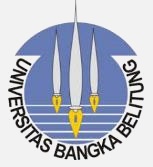A linguistics landscape of an Indonesian metropolitan spot: A glimpse over Braga
DOI:
https://doi.org/10.33019/berumpun.v5i1.93Keywords:
Linguistics landscape, signs, monolingual, bilingual, multilingual, BragaAbstract
This paper analyzes and explores the use of language in public spaces using the field of linguistics landscape. The purpose is to indicate and analyze the linguistic landscape features of billboards, road signs, commercial shop signs, campaign posters, etc that found in Braga Street, Bandung City. Braga Street is one of the famous areas in Bandung because Braga has many unique buildings so that people, especially youngsters come to Braga even just to hang out. The data collected by the writer are virtual spaces using the Google Street View application. The writer explores the Braga Street area with that application and then takes screenshots of those signs. Qualitative descriptive conducted in this paper by applying Shohamy and Gorter’s theory which refers to the analysis of the characteristics of bilingual and multilingual signs to better understand the multi-ethnic and multi-cultural city. The result is the use of monolingual and bilingual signs dominates especially in the private sector. Sundanese is still maintained by the people as evidenced by the existence of signs that use the local language. English is a foreign language that is quite often used by sign makers in this Braga Street area. This is because English can attract visitors by giving an impression, especially in the economic sector as their marketing strategy. Although the multilingual aspect in the Braga area is still very minimal, it can still show that the use of language in public spaces (Braga Street) areas is already varied.
Downloads
References
Ardhian, D., Fajar, Y. 2017. Linguistic Landscape in Malang City, East Java. JETAFL (Journal of English Teaching as a Foreign Language) ISSN: 2459-9506
Esteron, J.J. 2021. ENGLISH IN THE CHURCHSCAPE: EXPLORING A RELIGIOUS LINGUISTIC LANDSCAPE IN THE PHILIPPINES. Discourse and Interaction 14/2/2021, pp. 82-104 ISSN 1802 9930 https://doi.org/10.5817/DI2021-2-82
Fakhiroh, Z,., Rohmah, Z. 2018. Linguistic Landscape of Sidoarjo City. NOBEL: Journal of Literature and Language Teaching Volume 9, No 2, September 2018, p-ISSN 2087-0698 e-ISSN 2549-2470; 96-116
Halliday, M.A.K., Matthiessen, C.M.I.M. (2004). An introduction to functional grammar (revised ed.). London: Arnolds.
Sumarlam, et al. 2021. Capturing Social Issues Through Signs: Linguistic Landscape in Great Malang Schools, Indonesia. International Journal of Sustainable Development and Planning. Vol. 16, No. 3, June, 2021, pp. 591-601. Journal homepage: http://iieta.org/journals/ijsdp
Wafa, A & Wijayanti, S. 2018. Signs of Multilingualism at Religious Places in Surabaya: A Linguistic Landscape Study. Advances in Social Science, Education and Humanities Research (ASSEHR), volume 228 International Conference on Language Phenomena in Multimodal Communication (KLUA 2018) https://www.atlantis-press.com/proceedings/klua-18/25900081
Wang, J.J. 2015. Linguistic Landscape on Campus in Japan- A Case Study of Signs in Kyushu University. Intercultural Communciation Studies. Vol XXIV, No. 1. 2015. pp. 123-144.
Wulandari, B & Ilmiyatur, R. 2021. Reconstructing the Icon of Kota Santri Through Language Used in Public Places: A Linguistic Landscape in Pasuruan City. Advances in Social Science, Education and Humanities Research, volume 612 International Seminar on Language, Education, and Culture (ISoLEC 2021) https://www.atlantis-press.com/proceedings/isolec-21/125965748
Wulansari, D.W. 2021. LINGUISTIK LANSKAP DI BALI: TANDA MULTILINGUAL DALAM PAPAN NAMA RUANG PUBLIK. KREDO: Jurnal Ilmiah Bahasa dan Sastra Terakreditasi Sinta 4 berdasarkan Keputusan Direktorat Jenderal Penguatan Riset dan Pengembangan, Kementerian Riset, Teknologi dan Pendidikan Tinggi Republik Indonesia. Nomor: 23/E/KPT/2019. 08 Agustus 2019 https://jurnal.umk.ac.id/index.php/kredo/index
Xing Lu, et al. 2021. The Linguistic Landscape of Dali Ancient City, China: A Geosemiotics Approach. The International Journal of Language and Cultural TIJOLAC. DOI:https://doi.org/10.5281/zenodo.4707337. Vol. 3 No. 01, March 2021, pages: 46~55
https://humas.bandung.go.id/profil/tak-separuh-anak-bandung-gunakan-bahasa-sunda



